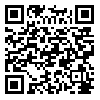دوره 8، شماره 4 - ( 8-1399 )
جلد 8 شماره 4 صفحات 222-211 |
برگشت به فهرست نسخه ها
Download citation:
BibTeX | RIS | EndNote | Medlars | ProCite | Reference Manager | RefWorks
Send citation to:



BibTeX | RIS | EndNote | Medlars | ProCite | Reference Manager | RefWorks
Send citation to:
Boskabadi H, Rakhshanizadeh F, Moradi A, Zakerihamidi M. Risk Factors and Causes of Neonatal Hyperbilirubinemia: A Systematic Review Study. J. Pediatr. Rev 2020; 8 (4) :211-222
URL: http://jpr.mazums.ac.ir/article-1-269-fa.html
URL: http://jpr.mazums.ac.ir/article-1-269-fa.html
Risk Factors and Causes of Neonatal Hyperbilirubinemia: A Systematic Review Study. Journal of Pediatrics Review. 1399; 8 (4) :211-222
چکیده: (6930 مشاهده)
Context: Jaundice is a common problem and the most common risk factor for hospitalization during the neonatal period.
Objective: The prevention of neonatal hyperbilirubinemia would not be possible without identifying its predisposing risk factors. The present systematic review study aims to determine the risk factors of neonatal jaundice.
Data Sources: Databases including Science Direct, Cochrane Library, Web of Science (ISI), PubMed, and Google Scholar were searched to identify all eligible papers concerning the risk factors of neonatal hyperbilirubinemia.
Study Selection: This systematic review was performed to review the causes and risk factors of neonatal hyperbilirubinemia. Finally, 18 articles were defined as eligible for further review.
Data Extraction: The keywords included neonates, jaundice, hyperbilirubinemia, and risk factors. The inclusion criteria were studies determining jaundice risk factors, while papers with only published abstracts were excluded.
Results: A total of 18 eligible articles (3 retrospective, 4 prospective, 10 cross-sectional, and 1 historical cohort) out of 421 retrieved articles were included in this review. The etiologic causes for neonatal jaundice were ABO incompatibility (24.6%), infection (including UTI and sepsis) (13.7%), G6PD deficiency (9.4%), Rh incompatibility (7%), and cephalohematoma (2.9%), while, known predisposing factors for neonatal jaundice included unknown (33.2%), low birth weight (30.9%), hyperbilirubinemia in siblings (22.7%), prematurity (20.1%), and infant of diabetic mother (6.7%).
Conclusion: According to our review with considering the studies, the etiologic causes for neonatal jaundice are ABO incompatibility, infection (including UTI and sepsis), G6PD deficiency, Rh incompatibility, and cephalohematoma. While, known predisposing factors for neonatal jaundice include low birth weight, hyperbilirubinemia in siblings, prematurity, and infant of diabetic mother.
نوع مطالعه: Systematic Review |
موضوع مقاله:
نوزادان
دریافت: 1398/8/12 | پذیرش: 1398/11/3 | انتشار: 1399/7/10
دریافت: 1398/8/12 | پذیرش: 1398/11/3 | انتشار: 1399/7/10
| بازنشر اطلاعات | |
 |
این مقاله تحت شرایط Creative Commons Attribution-NonCommercial 4.0 International License قابل بازنشر است. |





